What's the food and cuisine like in Panama?
Louis Seldon
.JPG) Food & Cuisine in Panama: Panamanian food is typical Caribbean style food with rice, beans, plantain, yuca (a root that tastes like a potato), tamales,
Food & Cuisine in Panama: Panamanian food is typical Caribbean style food with rice, beans, plantain, yuca (a root that tastes like a potato), tamales, 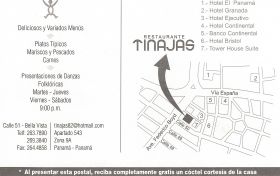 good fruit (pineapple, papaya, bananas, etc.)
good fruit (pineapple, papaya, bananas, etc.) I'm not generally a fish eater, but when I'm in Panama I eat a lot of Corvina, a white Sea Bass). Ceviche is especially good made with Ceviche.
For a good restaurant with typical food & a Panama dance show I recommend...
.JPG) Food & Cuisine in Panama: Panamanian food is typical Caribbean style food with rice, beans, plantain, yuca (a root that tastes like a potato), tamales,
Food & Cuisine in Panama: Panamanian food is typical Caribbean style food with rice, beans, plantain, yuca (a root that tastes like a potato), tamales,  good fruit (pineapple, papaya, bananas, etc.)
good fruit (pineapple, papaya, bananas, etc.) I'm not generally a fish eater, but when I'm in Panama I eat a lot of Corvina, a white Sea Bass). Ceviche is especially good made with Ceviche.
For a good restaurant with typical food & a Panama dance show I recommend Tinajas.
For good food, view & service, I recommend Mi Ranchito on the Amador causeway on the first island site of the old U.S. Army & Navy Officers' Beach Club..jpg)
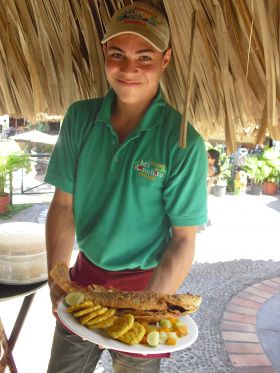
.jpg)

Posted April 12, 2013
Roy Cannon - Gestoria Cocle - main office in Penoneme
Inexpensive restaurants abound in Panama, but the Panamanian palate seems to prefer everything fried, to the detriment of the waistline and health. Salads are basically chopped lettuce and a tomato, poor by other international standards. If you like McDonalds, KFC and such, you will be very happy here as most international franchises are available. If you want to avoid deep fried food and rice as a daily diet, you will have a challenge on your hands.
...
Inexpensive restaurants abound in Panama, but the Panamanian palate seems to prefer everything fried, to the detriment of the waistline and health. Salads are basically chopped lettuce and a tomato, poor by other international standards. If you like McDonalds, KFC and such, you will be very happy here as most international franchises are available. If you want to avoid deep fried food and rice as a daily diet, you will have a challenge on your hands.
Outside of the major cities and tourist areas, wine is difficult to find in restaurants; the standard beverages are water, beer and "chichas" (natural fruit drinks, some of which are mixed with milk).
Fish and shrimp entrees are available on most menus, and are generally fresh rather than frozen.
Posted April 15, 2013
James David Audlin - Editores Volcán Barú
What is the Panamanian cuisine like? I feel now that my culinary life in the United States and France was deprived! Since moving here I have discovered literally dozens of new fruits and vegetables I had not previously even known existed! My two favorite vegetables are now otoé and yuca, which I never had tasted before coming here. And the fruits - fresh and delicious - constantly astound me. I live in the "breadbasket of Panama", the Tierras Altas, so fresh produce is...
What is the Panamanian cuisine like? I feel now that my culinary life in the United States and France was deprived! Since moving here I have discovered literally dozens of new fruits and vegetables I had not previously even known existed! My two favorite vegetables are now otoé and yuca, which I never had tasted before coming here. And the fruits - fresh and delicious - constantly astound me. I live in the "breadbasket of Panama", the Tierras Altas, so fresh produce is easily obtained. Often I can find great fruits and vegetables growing wild at no cost.
My wonderful Panamanian wife often buys fresh fish direct from a fisherman who goes through our village in his pickup tooting his horn - and whatever species she gets (all new species to me!) is always delicious. Chicken, however, is the staple meat here in the Tierras Altas.
Most Panamanian meals are served with rice - if there's no rice on your plate, check your passport to make sure you didn't accidently leave the country. A lot of food is fried, but the better restaurants (which are NOT necessarily the more expensive ones!) use quality cooking oil and know how to keep the oil on your plate to a minimum, and hence properly fried food here is in fact quite healthy.
In short, I have never so consistently eaten healthy food, especially the fresh produce.
My wonderful Panamanian wife often buys fresh fish direct from a fisherman who goes through our village in his pickup tooting his horn - and whatever species she gets (all new species to me!) is always delicious. Chicken, however, is the staple meat here in the Tierras Altas.
Most Panamanian meals are served with rice - if there's no rice on your plate, check your passport to make sure you didn't accidently leave the country. A lot of food is fried, but the better restaurants (which are NOT necessarily the more expensive ones!) use quality cooking oil and know how to keep the oil on your plate to a minimum, and hence properly fried food here is in fact quite healthy.
In short, I have never so consistently eaten healthy food, especially the fresh produce.
Posted May 26, 2013
Esteban Guerra
The common food in Panama is rice with vegetables and chicken, but you can also find food from everywhere in the world. There is Italian food, Asian food, etc. It all depends on what you want to eat.
Panamanian food is usually rice, vegetables, and chicken, which they eat any time of the day; whether it is breakfast, lunch, or dinner. It can be shocking for an expat, because rice meals are everywhere. Sometimes, Panamanians even make hot soup with rice,...
The common food in Panama is rice with vegetables and chicken, but you can also find food from everywhere in the world. There is Italian food, Asian food, etc. It all depends on what you want to eat.
Panamanian food is usually rice, vegetables, and chicken, which they eat any time of the day; whether it is breakfast, lunch, or dinner. It can be shocking for an expat, because rice meals are everywhere. Sometimes, Panamanians even make hot soup with rice, even if the weather is warm and they still feel comfortable.
Posted November 7, 2014
Diana Chacon
The food in Panama is really interesting. Being Colombian, because Colombia is very close to Panama, and because Panama used to be a part of Colombia, I thought the food in Panama would be similar to the food in Colombia, but it is not at all similar. The ingredients for most Panamanian food are seasonal, so I am not sure how restaurants keep stock of their ingredients. I think some have ingredients imported into Panama because there are certain ingredients that you really...
The food in Panama is really interesting. Being Colombian, because Colombia is very close to Panama, and because Panama used to be a part of Colombia, I thought the food in Panama would be similar to the food in Colombia, but it is not at all similar. The ingredients for most Panamanian food are seasonal, so I am not sure how restaurants keep stock of their ingredients. I think some have ingredients imported into Panama because there are certain ingredients that you really wouldn’t find here.
The typical Panamanian food would be rice, beans, plantains, pasta, and a lot of pork. They eat that every single day. Being Colombian and having lived in New York, I am used to getting anything anytime and anywhere. I am used to even going out in the snow to the grocery store to get my mangoes or lettuce since I know they have it in New York because everything is imported there. Here in Panama, if what you are looking for is not in season, then it will be difficult to find.
To me, that is one of the most difficult things about living here. If you want a guacamole, there won’t be avocados for about 10 months and then there will be an abundance of avocados for a whole 2 months. I am not saying that the food in Panama is not good, but it is seasonal. I haven’t seen cilantro in 5 months. If you want something that you are used to, and it is not in season and it couldn’t be imported, you will have a hard time finding it in Panama.
Posted December 2, 2014
Bill Hamilton - Bill Hamilton
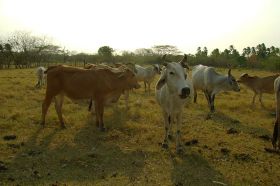 The food in Panama is terrible. It is boring and bland. It’s mostly chicken and rice or chicken, rice and beans or beans and rice and chicken and rice again.
The food in Panama is terrible. It is boring and bland. It’s mostly chicken and rice or chicken, rice and beans or beans and rice and chicken and rice again. Strangely enough, about the Panamanians, they don’t eat a lot of fruit. And the fruits are one of the best things I like about Panama. The taste of the fruit here is completely different from what you get in Europe or probably in the States. The pineapples are fresh;...
 The food in Panama is terrible. It is boring and bland. It’s mostly chicken and rice or chicken, rice and beans or beans and rice and chicken and rice again.
The food in Panama is terrible. It is boring and bland. It’s mostly chicken and rice or chicken, rice and beans or beans and rice and chicken and rice again. Strangely enough, about the Panamanians, they don’t eat a lot of fruit. And the fruits are one of the best things I like about Panama. The taste of the fruit here is completely different from what you get in Europe or probably in the States. The pineapples are fresh; everything’s fresh. I have a mango tree and papayas in my garden. I just planted some passionfruit. Everything here grows really rapidly.
The other thing I hate here is what they call the "culantro," but it really is not the same as "cilantro." It doesn’t taste the same as the cilantro you get abroad. It tastes horrible here. That’s just me, so maybe others would like it.
I must mention this. For anyone who is a connoisseur of Indian food, they have an Indian store in Panama City. I can buy everything I need, including ghee and basmati rice. Ghee is a clarified butter, which is traditionally used in Indian cooking, instead of oil. You cook the food in it. It makes the Indian dish even better. I cook lots of Indian food, so whenever we go to Panama City, we stock up on naan bread and sauces.
Next door to it, is an Argentinean beef place where you can get superb New York strip steak, like you’ve never tasted. The meat there is not cheap. The last amount I spent on meat there was about US $100. That was for six New York strip steaks and a big rack of mini lamb chops, the thin ones; plus these steaks were probably three inches thick. These steaks are from Argentina, not Panama.
The meat in Panama is from cows that are grass-fed (pictured). The meat is typically much tougher than you are used to in the States, because in addition to other things, they do not hang the beef after slaughter for long. You can get to know the cuts. For instance, I buy chuck steak at the butcher’s counter, and then, I get them to put it through the mincer twice. It makes beautiful hamburgers. But for a steak, forget it.
There’s a reason why the meat is tougher here in Panama. The same can be said about the meat in Spain. In the old days, people would only buy meat, if it was red and the blood was in it. They didn’t have proper refrigeration. That tradition remains in Spain and Panama. Now, in Europe and other countries, they inject red dye to make it look fresher.
When I buy meat, I look for a grayer meat, which is hung. In England, they place a whole side of beef in a chiller, so all the blood and sinews rest and everything drains out. That makes it tender. But here, of course, they buy it, they kill it, they sell it, and you’ve got really fresh meat, which obviously is going to be tougher. A little trick is, if you do buy the meat here, just hang it in your fridge for about a week, leave it in there, and it would probably be a lot less tough.
In Panama City, we used to go to Price Smart, which is the equivalent of Costco. I buy filet steak there. The whole filet costs me about US $22. It’s excellent steak. That would be four meals for two people.
You can get exotic or unusual food in Panama, if you want to, especially Chinese food, because of the Chinese influence in Panama. But I haven’t found a good Chinese restaurant yet, to be honest.
Posted February 2, 2015
Lourdes Townshend
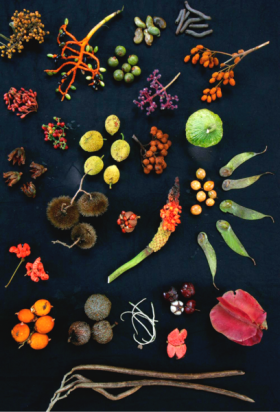 Different opinions and tastes, is what it makes a place very interesting. As a Panamanian, I can assure you that Panamá has one of the most diversified cuisines in the world.
Different opinions and tastes, is what it makes a place very interesting. As a Panamanian, I can assure you that Panamá has one of the most diversified cuisines in the world.Not only does Panamá offer hundreds of local products, but also innumerable imported products from all over the world, making this very modern and cosmopolitan city one of the most attractive cities for its variety and culture.
Outside of the city, in what Panamanians calls the...
 Different opinions and tastes, is what it makes a place very interesting. As a Panamanian, I can assure you that Panamá has one of the most diversified cuisines in the world.
Different opinions and tastes, is what it makes a place very interesting. As a Panamanian, I can assure you that Panamá has one of the most diversified cuisines in the world.Not only does Panamá offer hundreds of local products, but also innumerable imported products from all over the world, making this very modern and cosmopolitan city one of the most attractive cities for its variety and culture.
Outside of the city, in what Panamanians calls the "interior" (or the countryside), you can find the most beautiful beaches, sunsets and modern resorts, as well as very cute villages and towns, like Boquete, Las Tablas, Cermeño, Cerro Azul, Sorá, El Valle, among others, in which there are mountains and the environment is absolutely beautiful.
As of food and cuisine, Panamá is famous for several things. For example, the beef in Panamá is one of the best, and the government regulations are so strict, that makes the meat here one of the safest in the world, complying with all international regulations.
And comparing prices of the beef with other places like in the United States, the prices in Panamá are way lower. For instance, you can go to one of the best restaurants by the pool, and for an exquisite filet mignon, with potatoes and salad, and the cost could be very close to US $20 per person. And you could always add a good glass of wine, offered at almost all good restaurants.
At the grocery stores, you can find the best kind of lean pork, chicken, veal, fish or shrimps at extraordinary prices. If you go to the "fish markets," either in the city or in the interior, there is always fresh from the day.
Another specialty of Panamá is fruits and vegetables, always fresh, and very easy to grow in your back yard; “from the yard to your table.” But fruits and vegetables are always available at any corner, in the street as you drive, or any grocery shop... at ridiculously low prices.
Yes, some of them are seasonal fruits, but you can get them all year round. In other words, is up to you to have that special and nutritious diet you expect to have.
Some examples of prices are:
- Beautiful and big butter avocados $1.50 each
- Sweet and juice pineapples from 50 cents each (in Chorrera)
- Big papayas for $2.00 each
- Kiwis, 40 cents each
- Big mangos, 75 cents
- A bunch of celery, $1.00
- Bunch of the most aromatic culantro, 75 cents
- Broccoli $1.50 for a small bunch
- Strawberries, $2.50 for a small box, depending where you buy them
As of Panamanians preferences to eat, more and more are changing to nutritious diets, and a combination of grain, carbs, veggies, fruits, and soups are part of a daily meal. For the low-income people, whose salaries are very low, is little more difficult to get meat, but, as people in the United States do, they combine chicken, eggplant, lentils, rice and other ingredients to complete their meals.
Lots of public fairs are open to whoever wants lower prices, and are extremely helpful for getting groceries at good prices. The good thing is that every person can eat at his or her own time, budget and preference, because everything is available, local or imported.
If you visit or live in the provinces of Chiriquí, Veraguas, Coclé, or Bocas del Toro, you can visit farms offering all kinds of coffees, fruits and vegetables. The central provinces like Herrera, Los Santos are more into cattle. Darien is more into wood, cattle and fish.
Lots of public fairs are open to whoever wants lower prices, and are extremely helpful for getting groceries at good prices. The good thing is that every person can eat at his or her own time, budget and preference, because everything is available, local or imported.
If you visit or live in the provinces of Chiriquí, Veraguas, Coclé, or Bocas del Toro, you can visit farms offering all kinds of coffees, fruits and vegetables. The central provinces like Herrera, Los Santos are more into cattle. Darien is more into wood, cattle and fish.
(Forest fruits from Barro Colorado, Panama, pictured.)
Posted February 3, 2015
Michael A. Martinez - B & B Real Estate Nicaragua / Panama Real Estate Information
 There are a lot of different cuisines here in Panama. They have basic food. My bloodline is from Mexico, so I like to spice things up a bit. Here in Panama, they eat a lot of lentils and rice and chicken. Back in the old days, it used to be native chicken from your own front yard. Of course, we have fish during the season; we have seasons for shrimp and seasons for lobster. We have a lot of plantains. Panamanians like fried plantains. You can also steam them. Food here...
There are a lot of different cuisines here in Panama. They have basic food. My bloodline is from Mexico, so I like to spice things up a bit. Here in Panama, they eat a lot of lentils and rice and chicken. Back in the old days, it used to be native chicken from your own front yard. Of course, we have fish during the season; we have seasons for shrimp and seasons for lobster. We have a lot of plantains. Panamanians like fried plantains. You can also steam them. Food here... There are a lot of different cuisines here in Panama. They have basic food. My bloodline is from Mexico, so I like to spice things up a bit. Here in Panama, they eat a lot of lentils and rice and chicken. Back in the old days, it used to be native chicken from your own front yard. Of course, we have fish during the season; we have seasons for shrimp and seasons for lobster. We have a lot of plantains. Panamanians like fried plantains. You can also steam them. Food here in Panama is either fried or boiled.
There are a lot of different cuisines here in Panama. They have basic food. My bloodline is from Mexico, so I like to spice things up a bit. Here in Panama, they eat a lot of lentils and rice and chicken. Back in the old days, it used to be native chicken from your own front yard. Of course, we have fish during the season; we have seasons for shrimp and seasons for lobster. We have a lot of plantains. Panamanians like fried plantains. You can also steam them. Food here in Panama is either fried or boiled. For New Year’s Eve, we usually have grilled beef. In the US, we like bacon and eggs for breakfast, whereas here in Panama, we like liver and onions or steak in bell pepper and tomato sauce for breakfast!
They have their versions of the Panamanian tortilla, but it is different from the Mexican tortilla. It is almost like a little half inch thick potato cakes. So most of the food here is based on chicken, corn and potatoes. And they love their beans, which they call poroto, which is very similar to the Mexican pinto beans as compared to the Costa Rican black beans or the Nicaraguan red bean. It is funny because Nicaraguans only eat red beans and Costa Ricans only eat black beans, but here in Panama, it is a variety of beans. But the most eaten beans are the poroto.
The food and cuisine in Panama also depends on where you are in the country. Of course, if you are at the ocean, you will have their specialties there. They love oysters, clams, and all that goes under the term mariscos, which means seafood. The number one way to eat fish here is a whole fish fried. The typical Panamanian food is big fried fish, fried green plantains, which they call patacones (pictured), and probably with that, a small salad. The salads here are not the green lettuce that we are accustomed to. Most of the salads are shredded cabbage, and it is healthy for you.
Posted February 25, 2015
Jennifer Moloney Jones
_2.jpg) Panamanian food is usually composed of fish, chicken, rice, and peas called Guandu.
Panamanian food is usually composed of fish, chicken, rice, and peas called Guandu. The basic meal of local Panamanians is rice and chicken or rice and fish and plantain. They tend to fry their food, but they do not use a lot of spices.
They use culantro (pictured), which tastes a bit like cilantro and is mainly used in their soups and as flavoring for their dishes. It is very tasty.
_2.jpg) Panamanian food is usually composed of fish, chicken, rice, and peas called Guandu.
Panamanian food is usually composed of fish, chicken, rice, and peas called Guandu. The basic meal of local Panamanians is rice and chicken or rice and fish and plantain. They tend to fry their food, but they do not use a lot of spices.
They use culantro (pictured), which tastes a bit like cilantro and is mainly used in their soups and as flavoring for their dishes. It is very tasty.
Posted March 15, 2015
Jesahely De Janon - Panama Property Attorneys
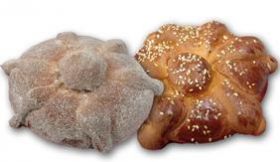 The food in Panama is excellent. There’s the sancocho, which is the traditional food in Panama. It is chicken soup. There’s the carimañola, which is a meat-pie stuffed with cheese, seasoned ground meat or shredded chicken and fried. There are hojaldres, which is the puff pastry. They eat these on special occasions.
The food in Panama is excellent. There’s the sancocho, which is the traditional food in Panama. It is chicken soup. There’s the carimañola, which is a meat-pie stuffed with cheese, seasoned ground meat or shredded chicken and fried. There are hojaldres, which is the puff pastry. They eat these on special occasions.As for the daily food, Panamanians by culture cannot live without rice. They eat rice with almost everything. Breakfast is important to them.
...
 The food in Panama is excellent. There’s the sancocho, which is the traditional food in Panama. It is chicken soup. There’s the carimañola, which is a meat-pie stuffed with cheese, seasoned ground meat or shredded chicken and fried. There are hojaldres, which is the puff pastry. They eat these on special occasions.
The food in Panama is excellent. There’s the sancocho, which is the traditional food in Panama. It is chicken soup. There’s the carimañola, which is a meat-pie stuffed with cheese, seasoned ground meat or shredded chicken and fried. There are hojaldres, which is the puff pastry. They eat these on special occasions.As for the daily food, Panamanians by culture cannot live without rice. They eat rice with almost everything. Breakfast is important to them.
Panamanian homes are very American. We normally eat bread, toast and pancakes. The traditional Panamanian breakfast has tortillas. That’s my favorite.
(Hojaldres, pictured.)
Posted October 5, 2015
Maria Amelia Pezzotti
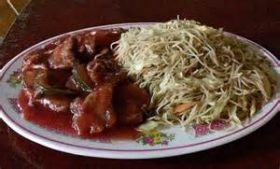 Most of the food and cuisine in Panama is fried. We have lots of food that is made of chicken, rice, and pork. In the provinces of Panama, we eat a lot of pork, chicken, corn, and tamales. There are lots of restaurants in Panama City for all tastes, and Panamanian food is starting to get recognized in the international market. We have a lot of Panamanian chefs who are experimenting with Panamanian cuisine, which had always been the same for many years but which is being reinvented now...
Most of the food and cuisine in Panama is fried. We have lots of food that is made of chicken, rice, and pork. In the provinces of Panama, we eat a lot of pork, chicken, corn, and tamales. There are lots of restaurants in Panama City for all tastes, and Panamanian food is starting to get recognized in the international market. We have a lot of Panamanian chefs who are experimenting with Panamanian cuisine, which had always been the same for many years but which is being reinvented now... Most of the food and cuisine in Panama is fried. We have lots of food that is made of chicken, rice, and pork. In the provinces of Panama, we eat a lot of pork, chicken, corn, and tamales. There are lots of restaurants in Panama City for all tastes, and Panamanian food is starting to get recognized in the international market. We have a lot of Panamanian chefs who are experimenting with Panamanian cuisine, which had always been the same for many years but which is being reinvented now by these chefs.
Most of the food and cuisine in Panama is fried. We have lots of food that is made of chicken, rice, and pork. In the provinces of Panama, we eat a lot of pork, chicken, corn, and tamales. There are lots of restaurants in Panama City for all tastes, and Panamanian food is starting to get recognized in the international market. We have a lot of Panamanian chefs who are experimenting with Panamanian cuisine, which had always been the same for many years but which is being reinvented now by these chefs. Panama has what is called crisol, which is a blend of races, traditions, and cultures. The culture and traditions of Panama were influenced by Chinese, Spanish, Italian, Indian, Caribbean, and many others from all over the world. Because of these influences from other countries, we have adapted many of these people’s cultures, including their food. We have a traditional Chinese food called chow mein. In Panamanian houses, you can eat chow mein made by a Panamanian cook. We also have Panamanian spaghetti which are made of achiote instead of tomato sauce, and it’s made of ribs instead of lamb.
When you go to Guatemala or when you go to Honduras, for example, you can expect to be served chicken, plantains, rice, avocado with Mexican tortilla because those areas have a lot of Mexican influence. In Panama, which is very close to Guatemala and Honduras, we don’t serve tortilla with your food unless you go to a Mexican restaurant. Panamanian food also has a lot of spices like cumin, oregano, etc. but it is not hot. There are a lot of spices for the flavor but it is not to make the food hot.
(Chinese food in Panama, pictured.)
Posted April 28, 2016


